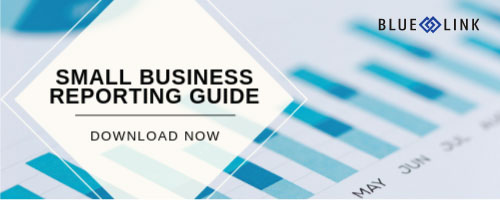Small to medium size businesses are becoming more confident in their ability to compete against larger competitors thanks to new technology helping to level the playing field. Chatbots, machine learning, AI and voice command tools are providing opportunities for small businesses to reach more customers and improve processes without the need to hire highly qualified staff, and as technology continues to advance, these types of features are becoming available at a lower price tag. But, before small businesses can reap the benefits of more sophisticated technology, they must first look internally at their existing processes and systems to evaluate opportunities, and this means breaking up with their reliance on one of the most popular small business tools in the market today – spreadsheets.
Spreadsheets: Friend or Foe?
It’s no secret that businesses love spreadsheets – since 1985 when Microsoft released the first version of Excel, companies around the world have been relying on the tool to crunch numbers, analyze data and present business information. And, before we get too far ahead of ourselves, let’s make one thing clear - Microsoft Excel is a great tool. Our staff uses it internally, many of our customers use it and as a Microsoft product it is simple to use, translates well across business departments and allows people within an organization to easily share and manipulate data. Therefore, this post is not making the case to stop using Excel, but rather it’s making the case to change the way your business uses Excel and to stop relying on it for certain tasks that are much better accomplished with more sophisticated technology such as accounting and inventory software.
As a company grows, it’s business needs will change. This is why many software solutions set limits on the number of users in terms of fit – not because the technology will fail past a certain number (although with introductory software this is often true), but because there are certain user and employee counts that require a fundamental change in business processes. The processes and structure of a 25 person company will be quite different from that of a 50 person company and a 150 person company - even if they all operate in the same industry. As an organization grows and becomes more complex, relying on spreadsheets and basic accounting solutions will be inadequate. An increase in transactions, the addition of product lines and an expanding customer base make it difficult to manually track pertinent information via spreadsheet. With Excel, gathering, managing and manipulating data becomes unwieldy, time-consuming and prone to the smallest human error – which can lead to massive bottlenecks and significantly impact the decision-making process. Data entry errors and redundancies are hard to spot and hard to fix, and it prevents management from getting insight into company health in real-time. As a business begins to grow, its relationship with Excel turns from love to love/hate. Although spreadsheets were initially a great tool, they will slowly become a drain on resources and productivity.
A Better Way
Instead of using introductory software and spreadsheets, consider implementing all-in-one accounting and inventory software. Integrated solutions have come a long way from 20 years ago and many accounting and inventory packages focus on small-medium size businesses with affordable monthly subscription fees. The right software is built to last and grow with your business for years to come and optional components enable businesses to expand and add new features when the time is right. Robust accounting and inventory software does not integrate with existing systems and instead replaces introductory software as an all-in-one solution. Although this means companies can eliminate spreadsheets as a software tool for managing information, such as customer contact details and inventory, spreadsheets are still a powerful tool when used in conjunction with sophisticated accounting and inventory software. Instead of manually rekeying information between systems, users can live-link data from the system database with Excel. This allows users to open existing reports in Excel and simply refresh the data to get real-time insight into business health. When used as a supplement to accounting and inventory software and not as a full data management system, Excel still provides many useful benefits. However, many accounting and inventory systems will also provide optional reporting tools that are more powerful and sophisticated than Excel to easily generate reports and share with the appropriate stakeholders. Examples include Crystal Reports, SQL Reports and Power BI.











